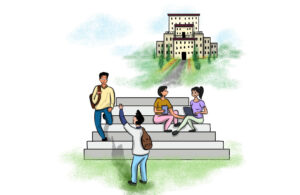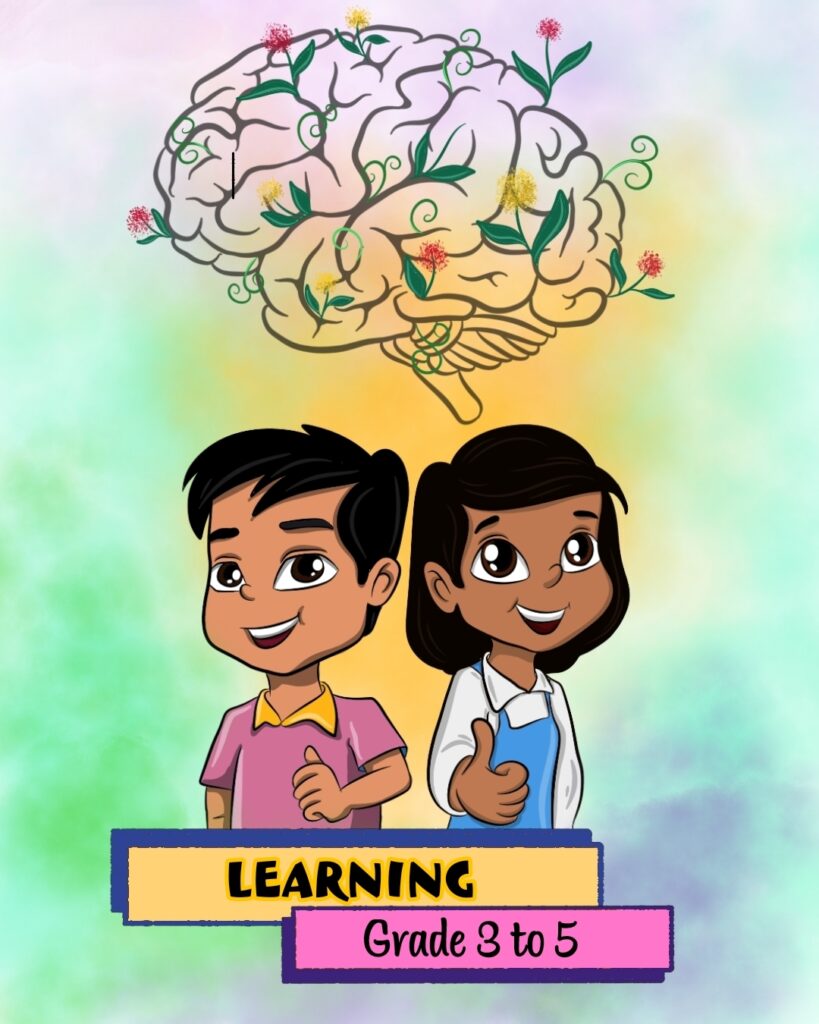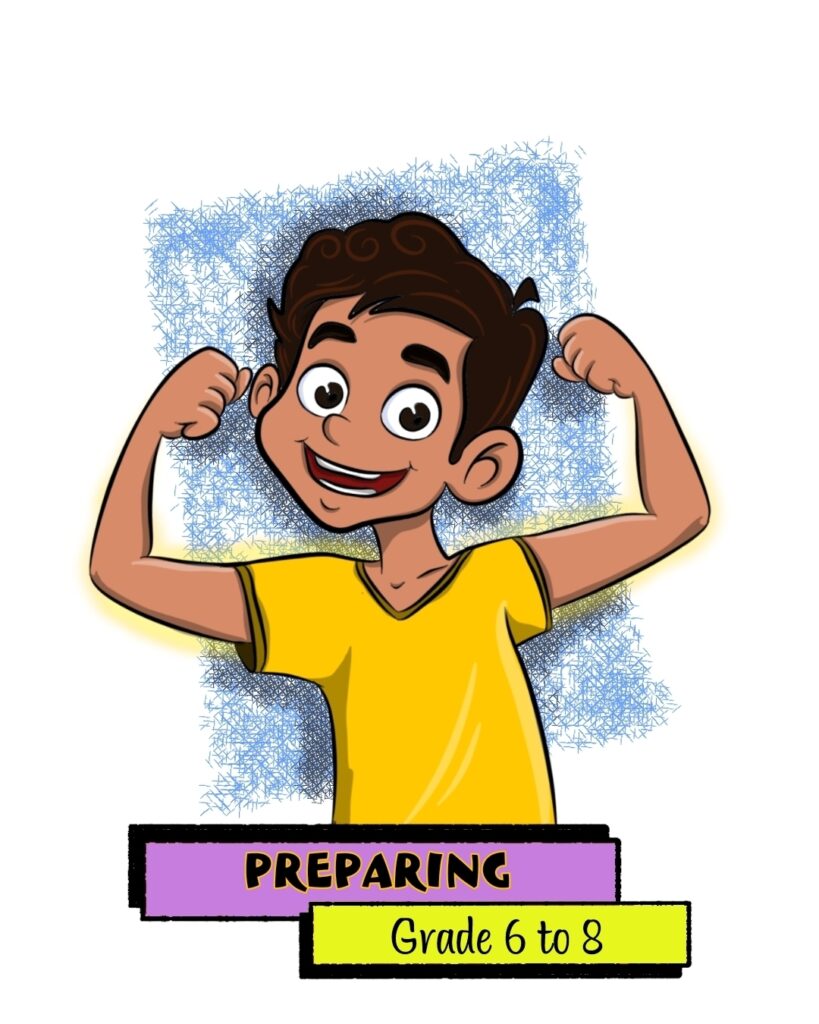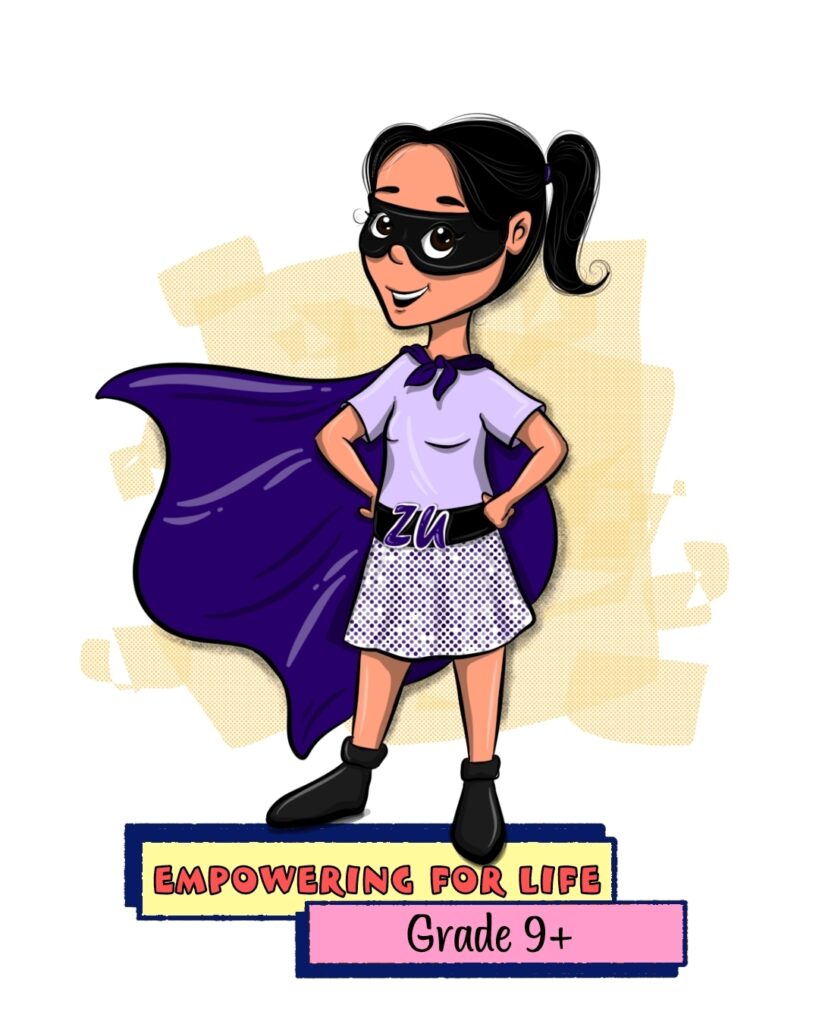Preventing Violence
According to a 2018 study by the NCERT, nearly 10% of students in India reported being bullied at school and bullying is more prevalent among boys than girls, and students in urban areas were more likely to be bullied than those in rural areas.
Teaching about Preventing Violence at a young age helps children in Developing empathy and respect, Build conflict resolution skills, Prevent victimization, Promote community safety and Address root causes of violence.
In our classes on Preventing Violence, we enable students to
- Manage interpersonal conflict in nonviolent ways.
- Manage emotional distress in nonviolent ways.
- Not bullying or being a bystander to bullying.
- Not engaging in violence, including sexual harassment, exploitation, physical fighting and persuading someone to do something by using force or threats.
- Avoid situations where violence is likely to occur.
- Not associating with others who are involved in or who encourage violence or criminal activity.
- Get help to prevent or stop violence including harassment, abuse, bullying, hazing, fighting, and hate crimes.
- Get help to prevent or stop unwanted or inappropriate touching.
- Get help to stop being subjected to violence or physical abuse.
- Get help for oneself or others who are in danger of hurting themselves.
Each lesson is designed meticulously with the help of global experts, our classes are not only age-appropriate but also culturally appropriate according to the region and state you are watching the classes in. We also customize the classes to fit the requirements of each school.
We follow eight step learning process to ensure life long positive impact on your children.
We are ZatchUp and we are dedicated to empowering your child to make healthy and safe life choices. Thank you
Grade wise learning objective
We follow an 8-step learning process to empower the kids for life. To learn more about our method of teaching, click here.
KG – Grade 2
- Step One: Step one is Understanding the Core Concept : We enable Students to comprehend core concepts related to our all health and safety courses such as consent, violence prevention
- Describe the difference between bullying and teasing.
- Explain why it is wrong to tease or bully others.
- Explain what to do if someone is being bullied.
- Explain why it is important to be a good friend.
- Describe examples of ways to be a good friend to others.
- Describe the difference between “wanted” and “unwanted” touch.
- Explain why unwanted or inappropriate touches should be reported to a trusted adult.
- Explain that a child is not at fault if someone touches them in an unwanted or inappropriate way.
- Explain why everyone has the right to tell others not to touch their body.
- Step Two : Second step is to Understand Influences : We enable Students to analyze the influence of family, peers, culture, media, technology, and other factors on their health and Safety.
- Identify how family can influence violence prevention practices and behaviors.
- Identify how school can influence violence prevention practices and behaviors.
- Identify how media and technology can influence violence prevention practices and behaviors.
- Describe positive influences on violence prevention practices and behaviors.
- Describe negative influences on violence prevention practices and behaviors.
- Step Three : Third step is to learn to access Information : We enable students to access valid information, products, and services to ensure good health and safety.
- Identify trusted adults at home who can help prevent violence.
- Identify trusted adults and professionals in school who can help prevent violence (e.g., school counselor, classroom teacher, principal).
- Identify trusted adults and professionals in the community who can help prevent violence (e.g., healthcare provider, police officer, firefighter, religious leader, mentor).
- Explain how to locate school health helpers who can help reduce or avoid violence (e.g., locate principal or counselor’s office, find school “safe-zone”).
- Explain how to locate community health helpers who can help reduce or avoid violence (e.g., police officer, healthcare provider, religious leader, mentor).
- Demonstrate how to locate school or community health helpers who can help reduce or avoid violence (e.g., locate principal’s office, find “safe-zone” at school, call dispatcher).
- Step Four: Fourth step is to learn Interpersonal Communication : We enable students to use interpersonal communication skills to enhance health and reduce all health risks.
- Demonstrate how to effectively communicate needs, wants, and feelings in healthy ways to prevent violence.
- Demonstrate effective active listening skills including paying attention, and verbal and nonverbal feedback to prevent violence.
- Demonstrate effective refusal skills, including firmly saying “no” and moving away, to avoid or prevent violence.
- Demonstrate how to effectively tell a trusted adult when feeling threatened or harmed.
- Demonstrate how to communicate care and concern for others to prevent violence.
- Step Five : Fifth step is to learn to make decisions : We enable students to use decision-making skills to enhance healthily behavior.
- Identify situations that need a decision that could lead to or prevent violence.
- Describe how family, peers, culture, technology, or media influence a decision that could lead to or prevent violence.
- Explain the potential positive and negative outcomes from a decision that could lead to or prevent violence.
- Describe when help is needed and when it is not needed to make a decision related to violence prevention.
- Step Six : Sixth step is to learn to Set Goals : We enable Students to set the right goals to enhance their health and keep themselves safe.
- Identify a realistic personal short-term goal to prevent violence.
- Take steps to achieve the personal goal to prevent violence.
- Identify people who can help achieve a personal goal to prevent violence.
- Step Seven : Seventh Step is learn Self-Management : We enable students to practice health-enhancing behaviors and reduce health risks.
- Identify practices that reduce or prevent violence.
- Demonstrate violence prevention practices.
- Commit to practicing violence prevention behaviors.
- Step Eight : Eight step is learn to Advocate : We enable Students to advocate not only for personal, but also for family, and community health.
- Make requests to others (e.g., family members) to prevent violence.
- Demonstrate how to encourage peers to prevent violence
Grade 2 – Grade 5
- Step One: Step one is Understanding the Core Concept : We enable Students to comprehend core concepts related to our all health and safety courses such as consent, violence prevention
- Explain ways to identify and label emotions.
- Explain that anger and related emotions (e.g., fear, shame, guilt) are normal.
- Identify nonviolent ways to manage anger.
- Identify health-enhancing ways to express and deal with emotions.
- Identify examples of self-control.
- Describe the difference between bullying and teasing.
- Describe prejudice, discrimination, and bias.
- Explain why it is wrong to tease or bully others based on personal characteristics.
- Describe what to do if oneself or someone else is being bullied.
- Identify examples of prosocial behaviors (e.g., using nonviolent conflict resolution, helping others, being respectful of others, and cooperation) that help prevent violence. ,
- Identify examples of ways to be a good friend.
- Identify examples of dangerous or risky behaviors that might lead to injuries.
- Identify situations that might lead to violence.
- Recognize techniques used to coerce or pressure someone to use violence.
- Describe how participation in gangs can lead to violence.
- Explain the difference between tattling and reporting aggression, bullying, or violence.
- Identify short- and long-term consequences of violence to perpetrators, victims, and bystanders.
- Identify strategies to avoid physical fighting and violence. ,
- Describe the benefits of using nonviolent means to solve interpersonal conflict.
- Describe ways to appropriately communicate with others to resolve conflict.
- Distinguish between wanted and unwanted touch.
- Explain that unwanted or inappropriate touches should be reported to a trusted adult.
- Explain why it is not a child’s fault if someone touches them in an unwanted or inappropriate way.
- Explain that everyone has the right to tell others not to touch their body.
- Explain the importance of telling an adult if someone is in danger of hurting themselves or others.
- Step Two : Second step is to Understand Influences : We enable Students to analyze the influence of family, peers, culture, media, technology, and other factors on their health and Safety.
- Identify how culture influences violence prevention practices and behaviors.
- Identify how peers influence violence prevention practices and behaviors.
- Identify how community influences violence prevention practices and behaviors.
- Describe how family and culture influence violence prevention practices and behaviors.
- Describe how school and community settings influence violence prevention practices and behaviors.
- Describe how media and technology influence violence prevention practices and behaviors.
- Describe how peers influence violence prevention practices and behaviors.
- Step Three : Third step is to learn to access Information : We enable students to access valid information, products, and services to ensure good health and safety.
- Describe characteristics of valid violence prevention information.
- Describe characteristics of valid health services that help reduce or avoid violence.
- Demonstrate how to locate sources of valid violence prevention information.
- Step Four: Fourth step is to learn Interpersonal Communication : We enable students to use interpersonal communication skills to enhance health and reduce all health risks.
- Demonstrate effective verbal and nonverbal communication skills to prevent violence.
- Explain how to be empathetic and compassionate toward others to prevent violence.
- Demonstrate effective peer resistance skills to avoid or reduce violence.
- Demonstrate healthy ways to manage or resolve conflict to prevent violence.
- Demonstrate how to effectively ask for help to prevent violence.
- Demonstrate how to effectively communicate support for others to prevent violence.
- Step Five : Fifth step is to learn to make decisions : We enable students to use decision-making skills to enhance healthly behaviour.
- Identify situations that need a decision to prevent violence.
- Decide when help is needed and when it is not needed to make a decision that could lead to violence.
- Explain how family, culture, peers, technology, or media influence a decision that could lead to violence.
- Identify options and their potential outcomes when making a decision that could lead to violence.
- Choose a healthy option when making a decision that could lead to violence.
- Describe the final outcome of a decision related to violence prevention.
- Step Six : Sixth step is to learn to Set Goals : We enable Students to set the right goals to enhance their health and keep themselves safe.
- Set a realistic personal goal to prevent violence.
- Track progress to achieving a personal goal to prevent violence.
- Identify resources that can help achieve a personal goal to prevent violence.
- Step Seven : Seventh Step is learn Self-Management : We enable students to practice health-enhancing behaviours and reduce health risks.
- Describe practices and behaviors that reduce or prevent violence.
- Demonstrate violence prevention practices and behaviors.
- Commit to practicing violence prevention behaviors.
- Step Eight : Eigth step is learn to Advocate : We enable Students to advocate not only for personal, but also for family, and community health.
- Give factual information to others to prevent violence.
- State personal beliefs to help others prevent violence.
- Demonstrate how to persuade others to prevent violence.
Grade 6 – Grade 8
- Step One: Step one is Understanding the Core Concept : We enable Students to comprehend core concepts related to our all health and safety courses such as consent, violence prevention
- Describe ways to identify and label emotions.
- Describe examples of self-control.
- Explain how impulsive behaviors can lead to violence.
- Analyze the risks of using violence as an impulsive behavior or response to stress or conflict.
- Identify a variety of nonviolent ways to respond to stress when angry or upset.
- Describe the similarities and differences between violent behaviors (e.g., bullying, hazing, fighting, dating violence, harassment, sexual assault, family violence, verbal abuse, rape).
- Describe how stigma, bias, and prejudice can lead to discrimination and violence.
- Explain why it is wrong to tease others based on personal characteristics.
- Explain the role of bystanders in escalating, preventing, or stopping bullying, fighting, and violence.
- Describe short- and long-term consequences of violence to perpetrators, victims, and bystanders.
- Describe examples of prosocial behaviors (e.g., using nonviolent conflict resolution, helping others, being respectful of others, and cooperation) that help prevent violence. ,
- Describe examples of dangerous or risky behaviors that might lead to injuries.
- Describe situations that could lead to physical fighting and violence.
- Analyze techniques that are used to coerce or pressure someone to use violence.
- Describe how the presence of weapons increases the risk of serious violent injuries.
- Summarize how participation in gangs can lead to violence.
- Explain how technology and social media can be used in violent or harmful ways toward others.
- Describe strategies to avoid physical fighting and violence.
- Describe ways to manage interpersonal conflict nonviolently.
- Determine the benefits of using nonviolence to solve interpersonal conflict.
- Explain why communicating effectively is important to resolving conflicts nonviolently.
- Describe ways to communicate effectively to manage conflict nonviolently.
- Explain why it is important to understand the perspectives of others in resolving conflicts nonviolently.
- Describe actions to change unsafe situations at school that could lead to violence.
- Describe actions to change unsafe situations in the community that could lead to violence.
- Explain why gender stereotypes are harmful and can lead to violence.
- Describe how power and control differences in relationships can contribute to aggression and violence.
- Recognize techniques that are used to coerce or pressure someone to have sex.
- Explain that rape and sexual assault are illegal.
- Explain why individuals have the right to refuse sexual contact.
- Explain that a person who has been sexually assaulted or raped is not at fault.
- Explain that rape and sexual assault should be reported to a trusted adult.
- Explain the importance of telling an adult if someone is in danger of hurting themselves or others.
- Describe the signs and symptoms of people who are in danger of hurting themselves or others.
- Explain that help is available for people who are feeling sad, hopeless, or thinking of hurting themselves (e.g., mental health services).
- Step Two : Second step is to Understand Influences : We enable Students to analyze the influence of family, peers, culture, media, technology, and other factors on their health and Safety.
- Explain how school rules, community norms, and public health policies or laws influence violence prevention practices and behaviors.
- Explain how perceptions of norms influence violence and violence prevention practices and behaviors.
- Explain how social expectations influence violence and violence prevention practices and behaviors.
- Explain how personal values and beliefs influence violence prevention practices and behaviors.
- Describe how some health risk behaviors influence the likelihood of engaging in violent behaviors (e.g., how alcohol- and other drug-use, mental and emotional health influence violent behaviors).
- Analyze how family and culture influence violence practices and behaviors.
- Analyze how school and community influence violence practices and behaviors.
- Analyze how media and technology influence violence practices and behaviors.
- Analyze how peers influence violence prevention practices and behaviors.
- Step Three : Third step is to learn to access Information : We enable students to access valid information, products, and services to ensure good health and safety.
- Analyze the validity of violence prevention information (e.g., differentiate scientifically or medically accurate content and advertising, including sponsored content).
- Analyze the validity of violence prevention or intervention services.
- Describe situations that call for professional violence prevention or intervention services.
- Access valid violence prevention information from home, school, or community.
- Locate valid violence prevention or intervention services when needed or appropriate.
- Step Four: Fourth step is to learn Interpersonal Communication : We enable students to use interpersonal communication skills to enhance health and reduce all health risks.
- Demonstrate the use of effective verbal and nonverbal communication skills to prevent violence.
- Demonstrate effective peer resistance skills to avoid or reduce violence.
- Demonstrate effective negotiation skills to avoid or reduce violence.
- Demonstrate healthy ways to manage or resolve conflict to prevent violence.
- Demonstrate how to effectively ask for assistance to prevent violence.
- Demonstrate how to communicate empathy and support for others to prevent violence.
- Step Five : Fifth step is to learn to make decisions : We enable students to use decision-making skills to enhance healthly behaviour.
- Identify circumstances that help or hinder making a decision to prevent violence.
- Determine when potentially violent situations require a decision.
- Distinguish when decisions about potentially violent situations should be made individually or with others.
- Explain how family, culture, technology, media, peers, and personal beliefs affect a decision that could lead to violence.
- Distinguish between healthy and unhealthy alternatives of a decision that could lead to violence.
- Predict the potential outcomes of healthy and unhealthy alternatives to a decision that could lead to violence.
- Choose a healthy alternative when making a decision that could lead to violence.
- Analyze the effectiveness of a final outcome of a decision that could lead to violence.
- Step Six : Sixth step is to learn to Set Goals : We enable Students to set the right goals to enhance their health and keep themselves safe.
- Assess personal violent and non-violent practices.
- Set a realistic personal goal to prevent violence.
- Assess the barriers to achieving a personal goal to prevent violence.
- Apply strategies to overcome barriers to achieving a personal goal to prevent violence.
- Use strategies and skills to achieve a personal goal to prevent violence.
- Step Seven : Seventh Step is learn Self-Management : We enable students to practice health-enhancing behaviours and reduce health risks.
- Explain the importance of being responsible for practicing violence prevention behaviors.
- Analyze personal practices and behaviors that reduce or prevent violence.
- Demonstrate violence prevention practices and behaviors to improve the health of oneself and others.
- Commit to practicing violence prevention behaviors.
- Step Eight : Eigth step is learn to Advocate : We enable Students to advocate not only for personal, but also for family, and community health.
- State a health-enhancing position on a violence prevention topic, supported with accurate information, to improve the health of others.
- Persuade others to prevent violence.
- Collaborate with others to advocate for individuals, families, and schools to prevent violence.
- Demonstrate how to adapt violence prevention messages for different audiences.
Grade 9 – Grade 12
- Step One: Step one is Understanding the Core Concept : We enable Students to comprehend core concepts related to our all health and safety courses such as consent, violence prevention
- Analyze why prosocial behaviors can help prevent violence. ,
- Analyze why being able to identify and label emotions is important for managing conflict nonviolently.
- Analyze why communicating effectively is important for resolving conflict nonviolently.
- Describe strategies to communicate effectively to manage conflict nonviolently.
- Analyze why it is important to understand the perspectives of others in resolving a conflict.
- Evaluate effective nonviolent strategies for dealing with difficult relationships with family members, peers, and dating or sexual partners.
- Analyze how mental and emotional health can affect violence-related behaviors. ,
- Describe ways to express anger nonviolently.
- Summarize nonviolent ways to respond to stress when angry or upset.
- Summarize impulsive behaviors that can lead to violence and strategies for controlling them. ,
- Analyze the relationship between using alcohol or other drugs and violence.
- Analyze situations that could lead to different types of violence.
- Summarize why the presence of weapons increases the likelihood of serious violent injuries.
- Analyze how gang involvement can contribute to violence.
- Describe characteristics of the school or community that can increase or decrease the likelihood of violence.
- Analyze how changing behavior or changing the environment interact to increase or decrease the likelihood of violence.
- Analyze the consequences of stigma, bias, prejudice, and discrimination resulting from racism, sexism, and hate crimes.
- Analyze how gender stereotypes can contribute to violence.
- Analyze how power and control differences in relationships (peer, dating, sexual, or family relationships) can contribute to aggression and violence. ,
- Summarize the qualities of a healthy dating or sexual relationship.
- Explain why it is an individual’s and partner’s responsibility to verify that all sexual acts are consensual.
- Explain why it is wrong to trick, threaten, or coerce another person into having sex.
- Analyze techniques that are used to coerce or pressure someone to have sex.
- Summarize why individuals have the right to refuse sexual contact.
- Explain why a person who has been raped or sexually assaulted is not at fault.
- Explain why rape and sexual assault should be reported to a trusted adult.
- Analyze the negative consequences of violence to perpetrators, victims, and bystanders.
- Explain how bystanders can help prevent violence by reporting dangerous situations or actions.
- Describe federal, state, and local laws intended to prevent violence.
- Analyze how technology and social media can be used in violent or harmful ways toward others.
- Describe the signs and symptoms of people who are in danger of hurting themselves or others.
- Summarize why it is important to tell an adult if there are people who are in danger of hurting themselves or others.
- Explain that self-directed violence is the result of an accumulation of multiple problems rather than just one problem.
- Explain that help is available for people who are feeling sad, hopeless, or thinking of hurting themselves (e.g., mental health services).
- Explain when to seek help for mental health issues that contribute to violence.
- Describe actions to take if weapons are seen or suspected in school or outside the supervision of a parent or caregiver.
- Describe actions to take in case of a disaster, emergency, or act of terrorism.
- Step Two : Second step is to Understand Influences : We enable Students to analyze the influence of family, peers, culture, media, technology, and other factors on their health and Safety.
- Explain how public health policies influence violence practices and behaviors.
- Analyze how culture supports and challenges violence prevention beliefs, practices, and behaviors.
- Analyze how peers and perceptions of norms influence violence and violence prevention practices and behaviors.
- Analyze how personal attitudes, values, and beliefs influence violence and violence prevention practices and behaviors.
- Analyze how some health risk behaviors influence the likelihood of engaging in violent behaviors (e.g., how alcohol- and other drug-use influence violent behaviors).
- Analyze how laws, rules, and regulations influence violence practices and behaviors.
- Analyze how school and community settings influence violence practices and behaviors.
- Analyze how media and technology influence personal, family, and community violence prevention practices and behaviors.
- Differentiate relevant influences, including family, culture, peers, school, community, media, technology and public health policies, on violence prevention practices and behaviors.
- Analyze the factors that influence opportunities to obtain safe, accessible, equitable, and affordable products and services that support violence prevention practices and behaviors for oneself and others.
- Step Three : Third step is to learn to access Information : We enable students to access valid information, products, and services to ensure good health and safety.
- Evaluate the validity of violence prevention information (e.g., differentiate between scientifically or medically accurate content and advertising, including sponsored content).
- Evaluate the validity of violence prevention or intervention services.
- Determine when professional violence prevention or intervention services may be required.
- Determine the accessibility of valid violence prevention or intervention services.
- Use resources that provide valid violence prevention information.
- Use valid violence prevention or intervention services when needed or appropriate.
- Step Four: Fourth step is to learn Interpersonal Communication : We enable students to use interpersonal communication skills to enhance health and reduce all health risks.
- Demonstrate effective communication skills to prevent violence.
- Demonstrate effective peer resistance, negotiation, and collaboration skills to avoid engaging in violence.
- Demonstrate effective communication strategies to prevent, manage, or resolve interpersonal conflict to prevent violence.
- Demonstrate how to effectively ask for assistance to prevent violence.
- Demonstrate how to effectively offer assistance to help others prevent violence.
- Step Five : Fifth step is to learn to make decisions : We enable students to use decision-making skills to enhance healthly behaviour.
- Examine barriers to making a decision that could be potentially violent.
- Determine the value of applying thoughtful decision making to a potentially violent situation.
- Justify when individual or collaborative decision making regarding a potentially violent situation is appropriate.
- Analyze how family, culture, technology, media, peers, and personal beliefs affect a decision that could be potentially violent.
- Generate alternatives when making a decision that could be potentially violent.
- Predict potential short- and long-term consequences of alternatives to decisions that could be potentially violent.
- Choose a healthy alternative when making a decision that could be potentially violent.
- Evaluate the effectiveness of decisions that could be potentially violent.
- Step Six : Sixth step is to learn to Set Goals : We enable Students to set the right goals to enhance their health and keep themselves safe.
- Assess personal violent and non-violent practices.
- Set a realistic personal goal to prevent violence.
- Assess the barriers to achieving a personal goal to prevent violence.
- Apply strategies to overcome barriers to achieving a personal goal to prevent violence.
- Use strategies and skills to achieve a personal goal to prevent violence.
- Step Seven : Seventh Step is learn Self-Management : We enable students to practice health-enhancing behaviours and reduce health risks.
- Analyze the role of individual responsibility for practicing violence prevention behaviors.
- Evaluate personal practices and behaviors that reduce or prevent violence.
- Demonstrate violence prevention practices and behaviors to improve the health of oneself and others.
- Commit to practicing violence prevention behaviors.
- Step Eight : Eigth step is learn to Advocate : We enable Students to advocate not only for personal, but also for family, and community health.
- Use peer and societal norms, based on accurate health information, to formulate messages to avoid or reduce violence.
- Persuade and support others to prevent violence.
- Collaborate with others to advocate for preventing personal, family and community violence.
- Encourage school and community environments to prevent violence.
- Adapt violence prevention messages and communication techniques for a specific target audience.
- Persuade school and community leaders about the importance of ensuring safe, accessible, equitable, and affordable violence prevention opportunities, products and services to improve the health of oneself and others.







